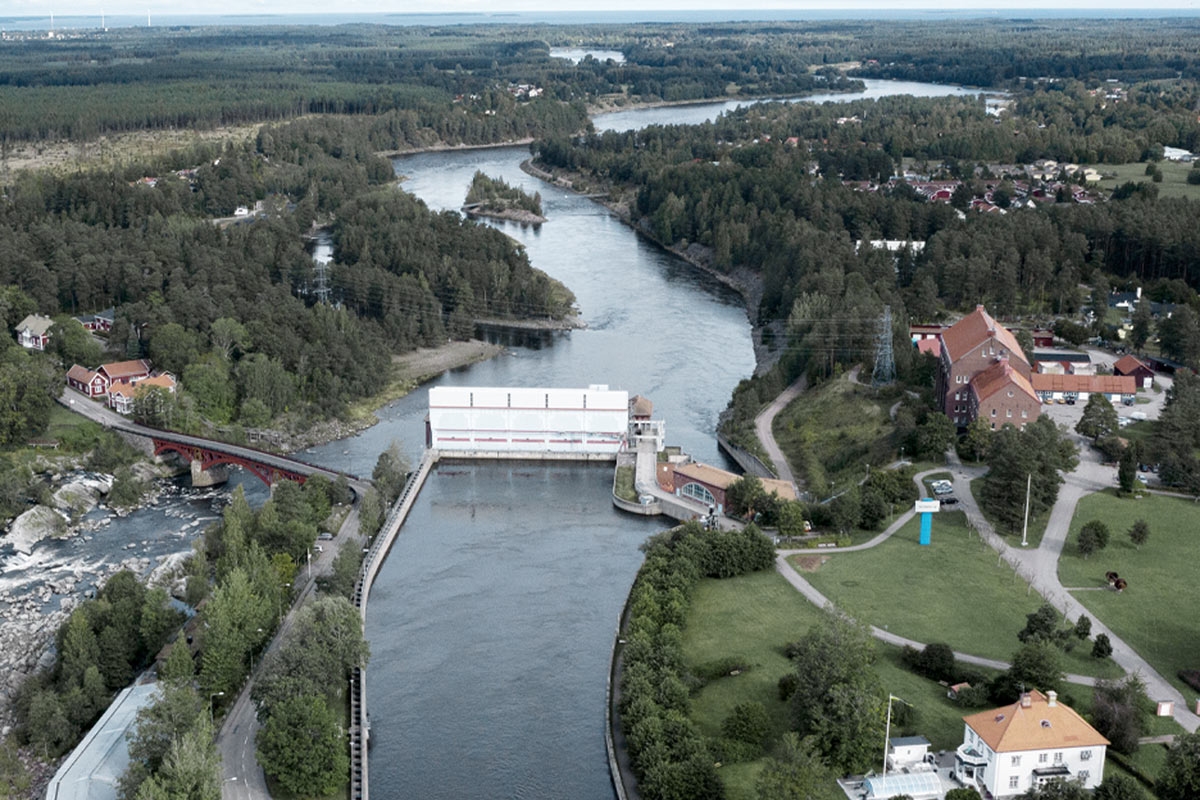Älvkarleby
Facts
Country
Sweden
Electricity Capacity
120 MWe
Stream
Dalälven
Head
23 m
Water discharge
700 m³/s
Turbine type
Francis
Vattenfall ownership share
100 %
Status
In Operation
Water information
Above pond
Below pond
Total
Through turbine
Through pond hatch
Last update

Älvkarleby power plant is located eight kilometres from the point where the river Dalälven flows into the Baltic Sea. The plant has been in operation since 1915.
New dams were built around 1990 in similar locations to the old dams. Construction of the new dams went hand in hand with expansion of the power plant. Between 1988 and 1991, a new power plant was built next to the old one.
History
Sweden's oldest hydro power plants – Olidan, Porjus and Älvkarleby – were all built in the early 20th century with the main purpose of supplying power to the railways and local industries. All three plants were designed by the architect Erik Josephson.
Älvkarleby was an important settlement as early as the Bronze Age, and it is thought that it was salmon fishing that attracted people to the area. Even after the construction of the Älvkarleby hydro power plant, the Dalälven remains a popular fishing river.

